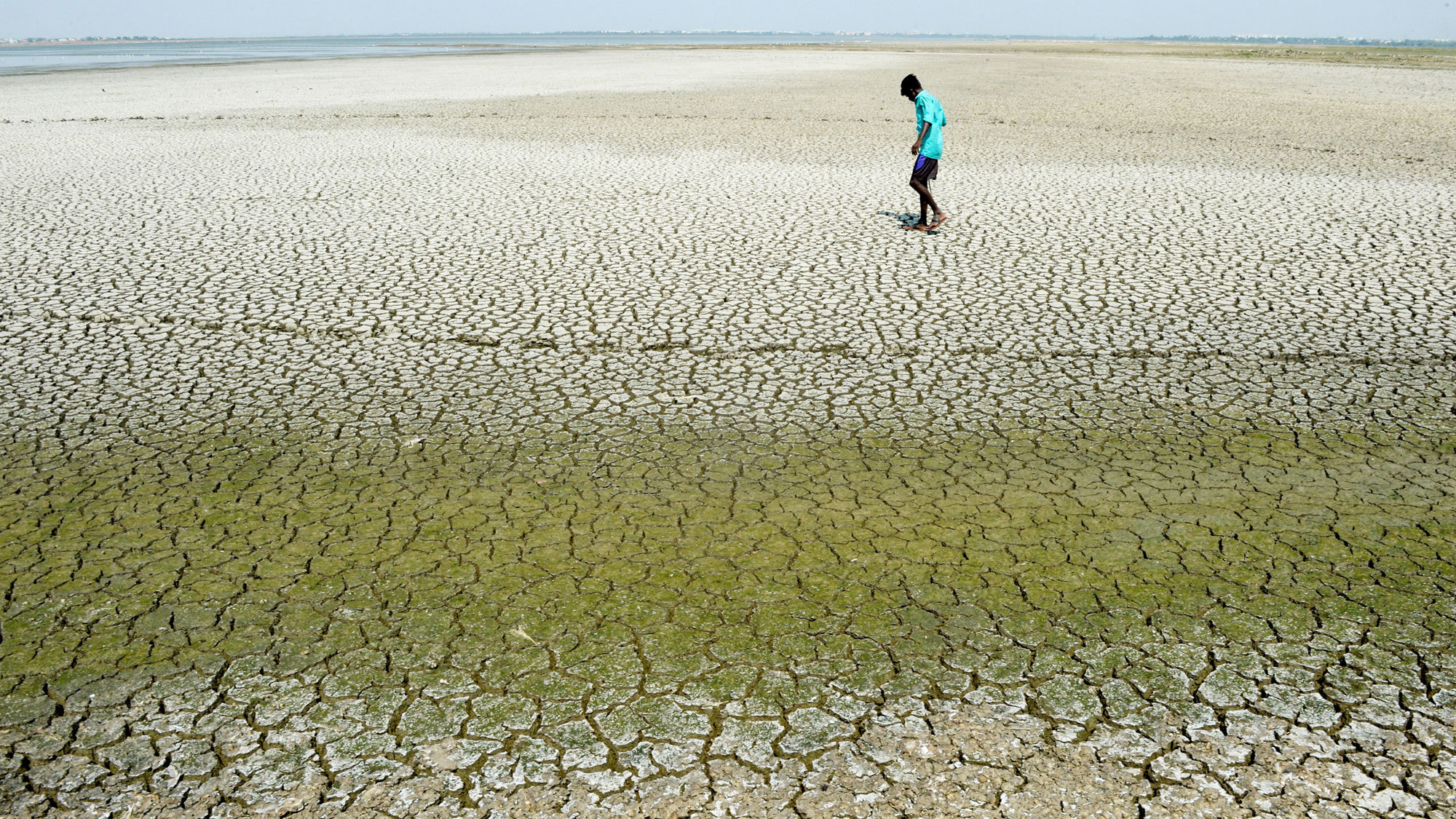Understanding The Dangers Of Climate Whiplash In Urban Environments

Table of Contents
Increased Risk of Infrastructure Damage and Failure
Climate whiplash significantly increases the risk of infrastructure damage and failure in urban areas. The rapid and intense shifts between extreme weather events overwhelm systems designed for more predictable conditions.
Water Infrastructure
Intense rainfall associated with climate whiplash leads to flash floods, overwhelming sewer systems and causing overflows that contaminate water supplies. Conversely, prolonged droughts resulting from these unpredictable weather patterns can cause pipe bursts due to pressure fluctuations and lead to widespread water shortages. Aging infrastructure, common in many cities, is particularly vulnerable to these extremes. The cost of repairing and upgrading this aging infrastructure to withstand climate whiplash is substantial, placing a heavy burden on municipal budgets.
- Bridge collapses due to flash flooding
- Water main breaks leading to widespread disruption and water scarcity
- Contamination of drinking water sources due to sewer overflows
- Increased energy consumption for water pumping during droughts
Transportation Infrastructure
Extreme heat generated by climate whiplash can warp roads and railway tracks, causing buckling and potentially derailments. Simultaneously, heavy rainfall can trigger landslides, causing road closures and disruptions to transportation networks. These disruptions impact public transport, causing delays and increased travel times, with significant economic consequences.
- Heat buckling of train tracks leading to service cancellations
- Road closures due to flooding, landslides, and washouts
- Airport delays and cancellations due to severe weather events
- Increased traffic congestion due to road closures and detours
Energy Infrastructure
Power grids are particularly vulnerable during climate whiplash events. Heatwaves increase energy demand, potentially leading to power outages, while storms can damage power lines and substations, causing widespread blackouts. This increased energy insecurity further exacerbates the challenges of adapting to climate change. Renewable energy infrastructure, while generally more sustainable, can also be susceptible to damage from extreme weather events.
- Power outages leading to disruptions in essential services (hospitals, communication)
- Increased reliance on backup generators, adding to carbon emissions
- Damage to solar panels, wind turbines, and other renewable energy infrastructure
- Increased vulnerability to cyberattacks on strained energy grids
Exacerbated Public Health Risks
The unpredictable nature of climate whiplash significantly exacerbates public health risks in urban areas. Rapid temperature fluctuations increase the strain on individuals and healthcare systems.
Heat-Related Illnesses and Deaths
Rapid temperature swings from extreme heat to cooler temperatures can increase the risk of heatstroke, dehydration, and other heat-related illnesses, particularly affecting vulnerable populations. The strain on healthcare systems during these events can be immense, leading to delays in treatment and potentially higher mortality rates.
- Elderly individuals
- Children
- Individuals with pre-existing health conditions (cardiovascular disease, respiratory issues)
- Homeless populations
Increased Spread of Infectious Diseases
Extreme weather events associated with climate whiplash can disrupt sanitation systems, creating ideal conditions for the spread of waterborne diseases. Flooding can also increase the breeding grounds for disease vectors like mosquitoes and ticks, leading to an increased risk of vector-borne illnesses.
- Cholera
- Typhoid
- Zika virus
- Lyme disease
- West Nile virus
Mental Health Impacts
The frequent and unpredictable nature of extreme weather events associated with climate whiplash can have significant mental health consequences. Individuals may experience increased stress, anxiety, post-traumatic stress disorder (PTSD), and depression. The constant uncertainty and fear associated with these events can take a toll on mental well-being.
- Increased rates of PTSD
- Anxiety disorders
- Depression
- Increased substance abuse
Economic and Social Disruptions
Climate whiplash events cause significant economic and social disruptions in urban environments, impacting various sectors and communities.
Damage to Property and Businesses
The economic costs associated with repairing damaged infrastructure and properties after climate whiplash events are substantial. Businesses can face closures due to flooding or damage, leading to job losses and economic hardship. The increased cost of insurance further burdens individuals and businesses.
- Business closures due to flooding or storm damage
- Increased insurance premiums
- Job losses in affected sectors
- Increased cost of living due to supply chain disruptions
Displacement and Migration
Severe climate whiplash events can cause displacement and migration within and from urban areas. The loss of homes and livelihoods due to flooding, wildfires, or extreme heat can force people to relocate, straining resources in receiving areas and potentially leading to social unrest.
- Loss of homes due to flooding or extreme weather events
- Strain on resources in receiving areas
- Increased competition for jobs and housing
- Potential for social unrest and conflict
Impacts on Food Security
Extreme weather events can disrupt urban agriculture and food supply chains. Crop failures, transportation disruptions, and damage to food storage facilities can lead to food shortages, increased food prices, and food insecurity, particularly affecting vulnerable populations.
- Crop failures due to droughts, floods, or extreme heat
- Disruption to food distribution networks
- Increased food prices
- Food insecurity and malnutrition
Conclusion
Climate whiplash presents a significant and growing threat to urban environments, causing widespread infrastructure damage, exacerbating public health risks, and leading to substantial economic and social disruptions. The unpredictable nature of these extreme weather events makes adaptation and mitigation strategies particularly challenging. Understanding the dangers of climate whiplash is crucial for building resilient cities. Learn more about local initiatives and advocate for climate-resilient urban planning to safeguard our communities from the devastating effects of unpredictable weather extremes. Addressing climate whiplash requires a multi-faceted approach, including investing in resilient infrastructure, improving public health systems, and implementing effective adaptation and mitigation strategies. Only through proactive measures can we protect our urban environments from the increasingly severe impacts of climate change.

Featured Posts
-
 Torpedo Bats The New Standard For Marlin Anglers
May 28, 2025
Torpedo Bats The New Standard For Marlin Anglers
May 28, 2025 -
 The Bianca Censori Phenomenon Examining Public Opinion On Kanye Wests Wife
May 28, 2025
The Bianca Censori Phenomenon Examining Public Opinion On Kanye Wests Wife
May 28, 2025 -
 Lawsuit Against Ryan Reynolds Justin Baldonis Lawyer Refuses To Back Down
May 28, 2025
Lawsuit Against Ryan Reynolds Justin Baldonis Lawyer Refuses To Back Down
May 28, 2025 -
 Kuliner Khas Bali 8 Rekomendasi Oleh Oleh Unik Bukan Pie Susu
May 28, 2025
Kuliner Khas Bali 8 Rekomendasi Oleh Oleh Unik Bukan Pie Susu
May 28, 2025 -
 Ajax Six Point Lead Diminished Analysis Of The Costly Refereeing Error For Az
May 28, 2025
Ajax Six Point Lead Diminished Analysis Of The Costly Refereeing Error For Az
May 28, 2025
Latest Posts
-
 Via Rails High Speed Rail Push A 330 K Investment In Quebec Marketing
May 30, 2025
Via Rails High Speed Rail Push A 330 K Investment In Quebec Marketing
May 30, 2025 -
 Alcaraz Triumphs In Monte Carlo A Week Of Tests Culminates In Victory
May 30, 2025
Alcaraz Triumphs In Monte Carlo A Week Of Tests Culminates In Victory
May 30, 2025 -
 Alcaraz Wins In Monaco A Championship Comeback
May 30, 2025
Alcaraz Wins In Monaco A Championship Comeback
May 30, 2025 -
 Alcaraz Claims Monaco Crown After Thrilling Rally
May 30, 2025
Alcaraz Claims Monaco Crown After Thrilling Rally
May 30, 2025 -
 Via Rail Paid Quebec Firm 330 K For High Speed Rail Marketing
May 30, 2025
Via Rail Paid Quebec Firm 330 K For High Speed Rail Marketing
May 30, 2025
